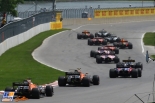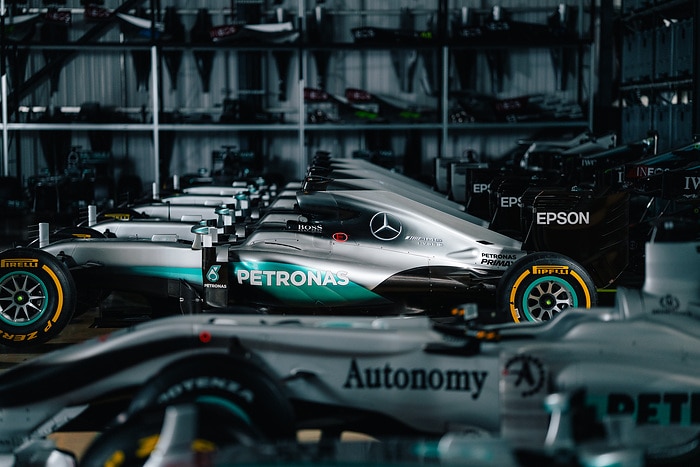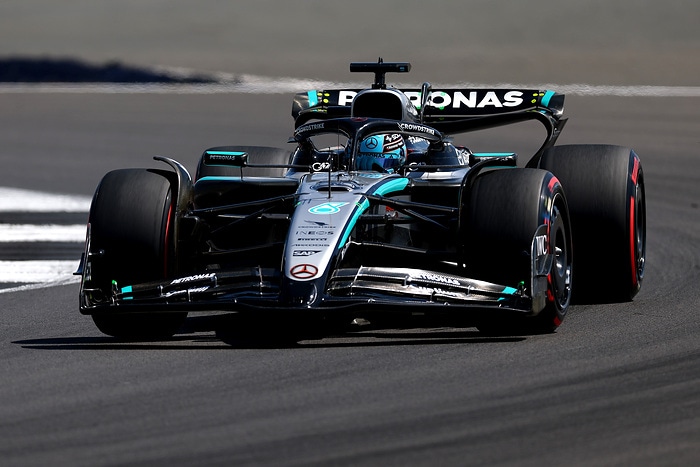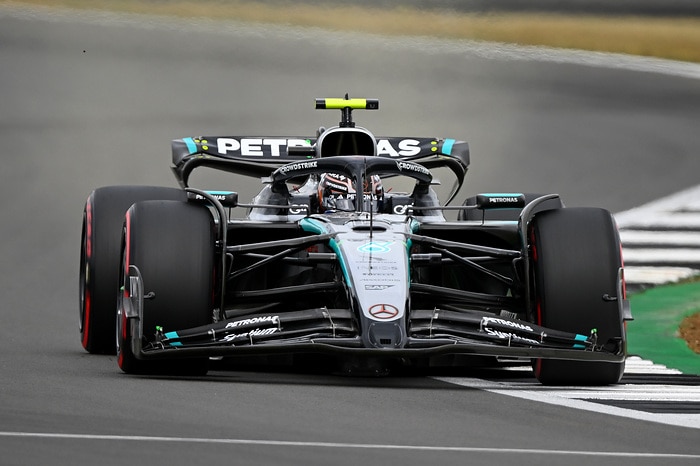
8:46 – Formula 1’s latest visit to Monza was far from smooth as poor weather, penalties and questionable track limits caused problems. But how can the sport avoid a repeat in the future? GPUpdate.net comments.
Dealing with penalties
150 places worth of grid penalties, mostly power unit-related, were amassed over the course of the Italian Grand Prix weekend, with only three drivers (Lewis Hamilton, Carlos Sainz Jr. and Jolyon Palmer) starting from their original qualifying positions. It created a confusing, laughable and sad situation for a sport that prides itself on being the pinnacle of motor racing. Fans, journalists, drivers and teams share many frustrations with the current penalty set-up. For one, the restriction on power unit elements (currently four of each of the six elements, per driver, per season) does little to prevent manufacturers working through components. How does a limit make for a ‘greener’ Formula 1 if unit after unit is still tested to destruction at factories and new ones introduced as soon as their predecessors inevitably fail earlier than planned, given the complexity of the current technical regulations? It is no more than an image, which has become increasingly transparent. “Simpler, cheaper and louder” power units, being discussed for 2021 and beyond, cannot come soon enough. But while the cries to return to naturally-aspirated V8s are understandable, Formula 1 also needs to evaluate where it sits in the changing motorsport and automotive arenas. Hybrid technology is likely to be kept, with electric power – showcased in Formula E – becoming a big player, while there is a “desire to maintain Formula 1 as the pinnacle of motorsport technology, and as a laboratory for developing technology that is relevant to road cars”. A suitable balance, however difficult to strike, is needed for the next power unit era. If Formula 1 chiefs can find this, and drop the obsession with penalties, by giving manufacturers more freedom to develop and introduce units without sanction, the championship would already be in a much better place.
Coping with wet weather

Formula 1 fans had to wait for two-and-a-half hours for any qualifying action on Saturday, as persistent rain led to delay after delay. Of course, if it simply rains too much, what can realistically be done to keep cars on the track? Football matches are occasionally cancelled for waterlogged pitches, cricket barely survives showers, and tennis is often paused when the first drops of rain arrive. However, one clear way in which F1 can learn from last weekend’s events is ensuring that all circuits are prepared to the same standard. Fernando Alonso declared the newly resurfaced pit straight, which retained most of the water, as “not ready” for Formula 1. “I think the only problem was the start/finish line, the asphalt there,” he said. “If they put new asphalt a couple of weeks ago, make sure that that asphalt is ready, in case of a little bit heavier rain. If it’s torrential rain, we need to delay, and we need to stop. Sometimes it happened in Malaysia. In Austin it happened also another year. It was not that heavy, the rain, but it was maybe the circuit not [being] ready.” And leading on from this, big questions were raised over the way in which Race Control managed the situation. Why was a tractor – fitted with a massive air blower – only sent out two hours into the delays? Although rain fell consistently for a lengthy period, significant standing water would have been cleared and the task made easier when it eventually eased. After just a few trips up and down the straight, as marshals tackled other areas of the track, the tractor cleared the surface sufficiently. With more thorough checks, better preparation and clearly defined procedures, the majority of the delays could have been avoided.
Nailing down track limits

Another hot topic at Monza – albeit debated on many occasions in recent seasons – was track limits. After Formula 1’s pair of Friday practice sessions, in which drivers used the mass of run-off at the exit of Parabolica to better propel themselves onto the start/finish straight, an anti-cut kerb was installed. While this largely eradicated the issue, it was another solution to a problem that should not exist. “I don’t like that the Parabolica doesn’t have a gravel trap anymore,” said Daniil Kvyat pre-race. “It’s now all asphalt, so it’s not such of a challenge and a compromise if you go off track. In the past, it could end up meaning that your race was over.” Simple answer? A smaller strip of tarmac, and a larger gravel trap, deterring drivers from putting more than two wheels over the white line (naturally defining track limits), and still punishing them if they make a mistake. Being too forgiving with run-off areas is also a breeding ground for drama. In Sunday’s sole GP3 race, there were countless incidents as eager drivers lunged up the inside of rivals at the chicanes and made contact, in the knowledge that there would be plenty of tarmac to save them. Addressing the topic earlier this year, Grand Prix Drivers’ Association Chairman Alexander Wurz told GPUpdate.net: “I would make the cars safer, but then I’d go to way more extreme circuit designs. So that [means] when someone goes wide he’s not going wide on a 20-metre asphalt run-off area with no consequence; there’s a wall, grass or gravel and there are instant consequences.”
Written by: Mike Seymour
Source :http://feeds.gpupdate.net






















